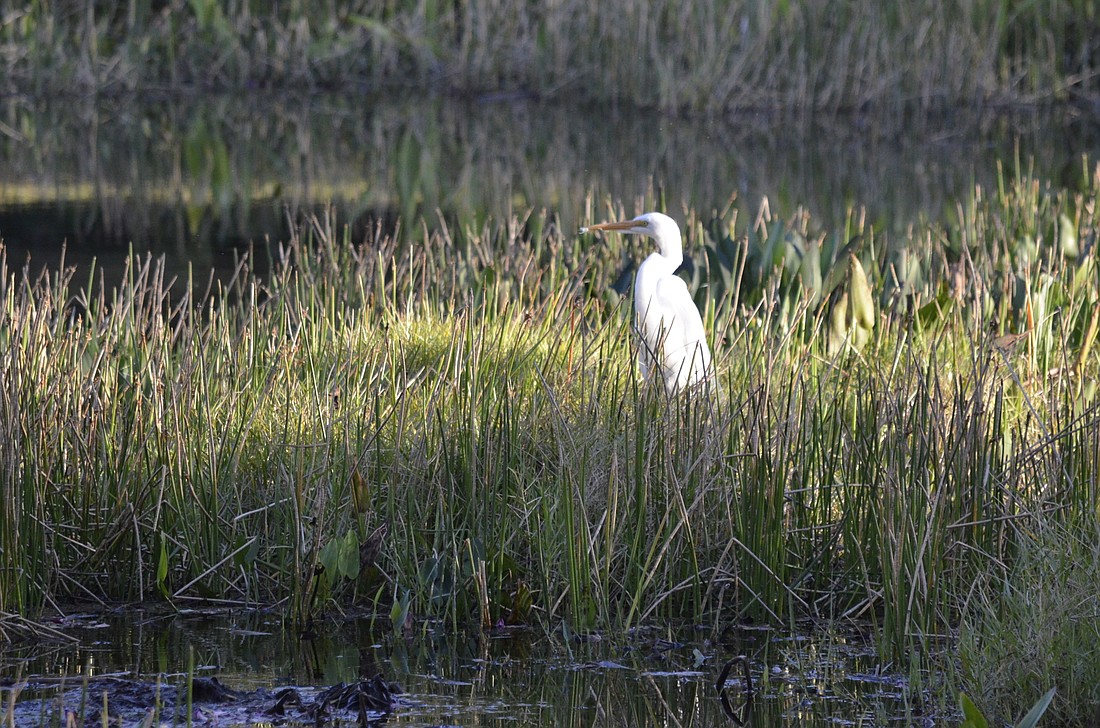- April 27, 2024
-
-
Loading

Loading

During the resident comment session at the Tara Preserve pond workshop Jan. 19, almost every complaint began the same way.
“When I moved in, there weren’t any of these weeds blocking my view of the pond.”
Unfortunately for those who thought they were paying for a water view, they actually are living next to man-made storm retention and water treatment pond.
The Tara Preserve Community Development District has contracted with Aquatic Systems since March 2014 to achieve a more natural, environmentally friendly approach to pond maintenance. Those weeds alongside the pond act as a filter.
Jeff Whaley, a representative for Aquatic Systems, gave a presentation during the workshop at the Preserve Community Center.
Whaley explained how the retention ponds function as a way to collect runoff from impervious surfaces within developments, such as sidewalks and roadways, and how the water “rests” in the ponds before moving on, ultimately ending up in the Braden River, the Manatee River and then out to the gulf.
Whaley’s team also is recommending aerators for stratified ponds, which circulate the water and cycle nutrients, along with adding sterilized carp to eat invasive plant species and excess vegetation.
Those initiatives cost money, and that has some of the supervisors worried about spending.
“The district has sufficient funds to carry out its duties,” said vice-chairman Dan Powers. “But we have to watch spending the money.”
The carp will cost around $9,000, and the board has paid for barriers in several ponds that keep the carp from escaping. Powers said the board probably will move forward in acquiring the fish, but he had his reservations.
“When they get bigger, they become gator lunch,” he said. “If the carp come in and do a good job, we’ll expand the program, but if they don’t we’ll look at what path to take.”
The aerators would cost between $22,000 and $24,000 apiece depending on the size.
During the supervisors board meeting before the pond workshop, treasurer John Dyer told fellow members they had other areas of concern.
The biggest expense facing the district is the relocation and replacement of the pool equipment room. It’s being moved outside and put underneath a VakPak cover. The project was made necessary because the equipment within the current pool room, located in the northwest corner of the community center, is malfunctioning.
That unexpected project carries a hefty bill, which the board approved an expenditure not-to-exceed $78,000. They also are working to fill a dysfunctional drainage pond, which could cost thousands of dollars.
At the CDD meeting, supervisors began discussing which capital projects could be put on hold, or if the board should consider raising the resident assessments, something it has avoided for five years. Condo owners pay approximately $275 annually in CDD taxes, while homeowners pay a range of $856 to $1,500 in annual taxes to the CDD depending on the size of their home.
Powers doesn’t want to see residents charged more unless it’s absolutely necessary, saying that while Tara Preserve is not exactly a “blue collar” neighborhood, it still has residents on fixed incomes or retirees that would be hurt by increased fees.